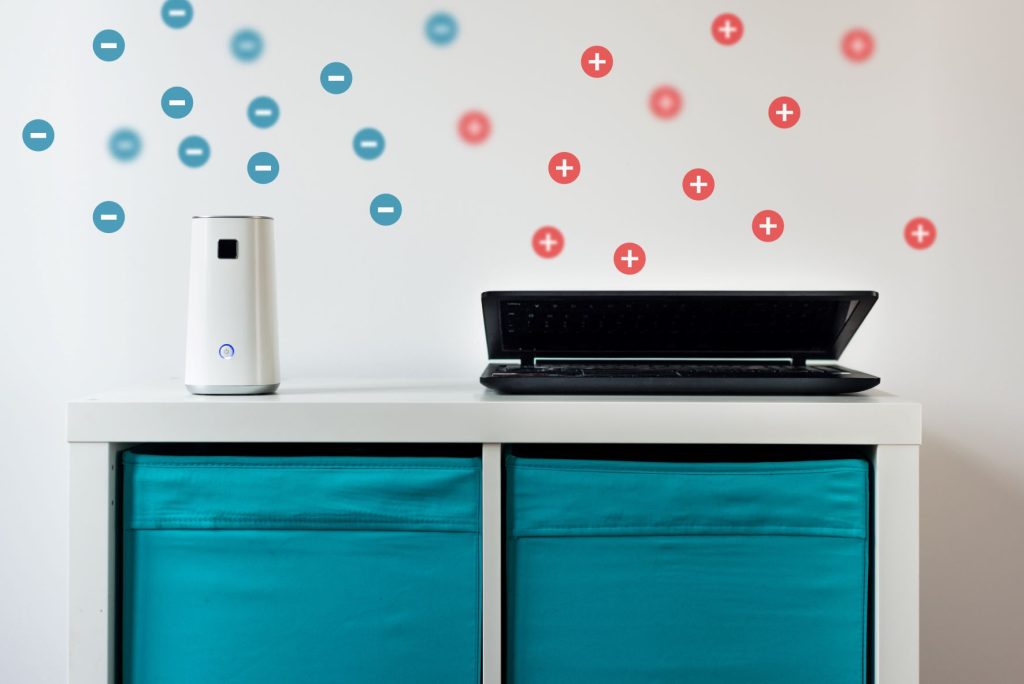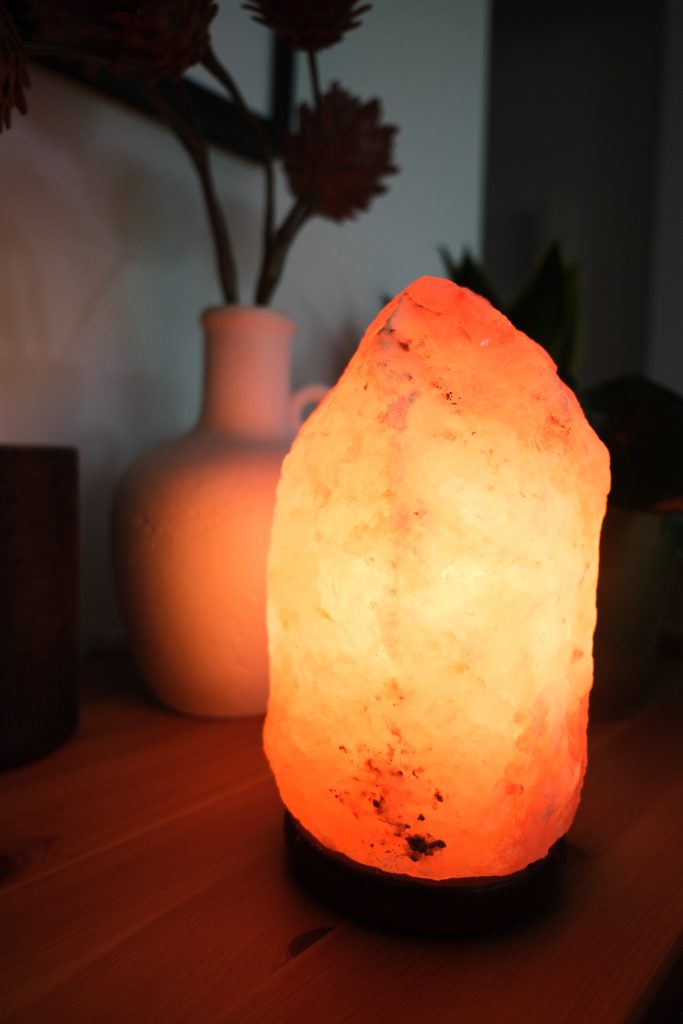What Are Ionisers And Do They Really Work?
If you’re reading this, you likely want to know more about purifying the air in your home or office. You’ve maybe heard about some of the benefits of ionisers or had someone recommend using one, but your still not really sure what they do or if they can benefit your health.
In this guide, we’ll take you through all you need to know about ionisation, what devices offer ion-releasing technology and discuss the pros and cons so that you can decide what the best air purifying device might be for your needs.
What is an ioniser?
An ioniser is a device that produces negative ions and is used to improve air quality in homes and office buildings. Ionisers have been around for some time, but since the Covid-19 pandemic, many people have become much more conscious about the air that they breathe and are looking for ways to improve air quality – ionisers are just one way of achieving this.

Negative ions
Negative ions are atoms or molecules that have gained an extra electron. They are created in abundance in natural environments, particularly near waterfalls, during thunderstorms, or by waves crashing on the shore.
Have you ever noticed that you are feeling calmer and more relaxed when at the beach or breathing in the air in a green environment? This is all down to those wonderful negative ions that the body is absorbing from the space around you.
Negative ions are also found in some indoor environments, such as those that use salt lamps and ionisers. However, the levels of negative ions found indoors are significantly less than those of the outdoors.
What are the benefits of negative ions?
Negative ions are believed to have several benefits for the human body, including improved mood and reduced stress levels. A number of studies have looked at the effects of negative ions in both the air and within the human body.
One study found that exposure to negative ions can help to improve mood and reduce stress levels.* The study found that participants who were exposed to negative ions felt more relaxed and had a lower heart rate than those who were not exposed to them.
Another study looked at the effects of negative ions on asthma sufferers. The study found that those who were exposed to negative ions had less severity of symptoms and improved lung function.**
A further study looked at the effects of negative ions on people with seasonal affective disorder (SAD). The study found that exposure to negative ions can help to improve symptoms of SAD, such as depression and fatigue.***
Overall, the evidence suggests that negative ions have a range of benefits for the human body; however, it must be pointed out that many studies conducted have been inconclusive as to the benefits, if any and ultimately that more research is need confirm the claimed effects.
Positive Ions
Unfortunately, the modern-day home and workplace is a breeding ground for potentially harmful positive ions.
Office air conditioning systems, fluorescent lights, and electronic devices, such as computers, TVs and mobile phones, all release high concentrations of positive ions into the air.
Positive ions are known to cause fatigue, headaches, anxiety, and depression while also exacerbating conditions such as asthma and allergies.
In fact, research has shown that exposure to high levels of positive ions can have a significant impact on our mood, energy levels and overall sense of wellbeing.
Awareness of such is driving those in the know to look to ways of improving their environment to benefit their long-term health and wellbeing.
How do ionisers work?
The overall goal of using an ioniser is to purify the air which you are breathing in.
Ionisation is a process in which air molecules are bombarded with negatively charged ions. These ions attach themselves to positively charged particles in the air like dust, pollen, and smoke. This process causes the particles to become heavier and fall out of the air, to the floor or nearest surface, where they can be vacuumed up or caught in a filter.
Some ionisers claim to capture the particles on their ‘plates’, which you can then wash later to completely remove harmful traces of particulate matter. But, in reality, most of the particles have already stuck to the nearest surface in the room, and very few actually make it all the way back to the Ioniser itself.
Is an ioniser the most effective method of cleaning the air?
No, an ioniser is not the most effective method of cleaning the air. There are many factors to consider when choosing a device to purify the air, and ionisers are just one types of air purifier.
Other types of air purifiers include mechanical filters, activated carbon filters, and ozone generators. Each type of air purifier has its own strengths and weaknesses, so it is important to choose the right type of air purifier for your needs. In general, mechanical filters are the most effective type of air purifier, followed by activated carbon filters. Ozone generators are less effective than other types of air purifiers, but they have the advantage of being very portable and easy to use.
What is the difference between an ioniser and air purifier?
The difference between an air purifier and ioniser lies in the technology within each device.
Ionisers release negative ions which attach to positively charged molecules in the air, making them heavy enough to fall to the ground where they can be cleaned up.
Air purifiers work by trapping harmful particles in the air within their filter, although some air purifiers also include ionisation technology for any particles that are too small to be captured by even the most effective Hepa air filters.
While air purifiers that use ionisation can be effective at improving indoor air quality, there are some potential drawbacks to consider. One is air purifiers that use ionisation can produce ozone, a gas that can be harmful to human health. However, the levels of ozone produced by ionisers are usually not high enough to be harmful.
Air purifiers also provide protection from several larger particles found in the air, such as dust and pollen (which ionisers can struggle to do), making them more effective for people suffering from hay fever, asthma or pet allergies.
If you’re considering an air purifier that uses ionisation, it’s important to do thorough research and weigh the potential benefits and risks before making a purchase.
So what can you do to protect yourself from the harmful effects of positive ions and access cleaner air?

Here are a few simple tips:
- Spend time outdoors – One of the best ways to counteract the negative effects of positive ions is to spend time in nature. Being surrounded by trees, plants and bodies of water will help to neutralise the effects of positive ions, leaving you feeling refreshed and invigorated.
- Get a Himalayan salt lamp – Himalayan salt lamps are said to have a number of health benefits, one of which is reducing the levels of positive ions in the air.
- Avoid electronic devices – When possible, try to avoid using electronic devices such as computers, tablets, and phones. If you must use them, be sure to take breaks often and stay well-hydrated to reduce the negative effects of positive ions.
- Cleanse your space – Another way to reduce the levels of positive ions in your environment is to use sage or Palo Santo wood to smudge your home or office space. This ancient practice is said to cleanse the space and remove negative energy.
- Invest in an air purifier – Research your options and invest in an air purifier that actually removes contaminants from the air and uses uvc technology to kill harmful particles, as this ensures the air that you are breathing is fresh and safe.
At Air Care Solutions we offer a range of air purifiers suitable for all spaces, from individual rooms right through to commercial office and industrial premises. With options to join our rental plan or the ability to outright purchase, we can help you find the right option for your needs. Talk to one of our friendly customer sales executives today and ask about our ‘Try it risk free offer’.
References
*Iwama H, Ohmizo H, Obara S. The relaxing effect of negative air ions on ambulatory surgery patients. Can J Anaesth. 2004
**Ben-Dov I, Amirav I, Shochina M, Amitai I, Bar-Yishay E, Godfrey S. Effect of negative ionisation of inspired air on the response of asthmatic children to exercise and inhaled histamine. Thorax. 1983
*** Flory R, Ametepe J, Bowers B. (2010) A randomized, placebo-controlled trial of bright light and high-density negative air ions for treatment of Seasonal Affective Disorder
